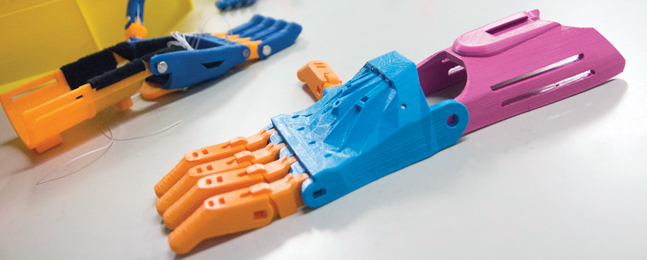Faculty Vote to Launch Engineering Degree Program

Ian Roy
In April, Brandeis faculty voted overwhelmingly to approve a new interdepartmental engineering major and program that will draw on all aspects of the liberal arts, from history and design to sustainability and ethics. The proposed Bachelor of Science degree will launch no later than 2025 and will eventually entail hiring up to eight new faculty members, who will be placed within existing departments.
“We want our engineering students to understand government, economics, culture, and how to write and communicate,” says physics professor Seth Fraden, PhD’87, one of the scientists spearheading the new major’s implementation. He points out that Brandeis is uniquely qualified to offer an engineering science degree, given its interdisciplinary bent, highly successful National Science Foundation-funded Materials Research Science and Engineering Center, and MakerLab.
“Many people have an image of an engineer with a pocket protector and a slide rule, or they imagine an engineer standing next to a bridge,” says Fraden. “We’re not doing that kind of siloed, disciplinary engineering degree. Our program is based in science and the liberal arts. Our graduates will have the background of a scientist with the philosophy, outlook and identity of an engineer.”
Fraden, who has promoted the idea of an interdisciplinary engineering science degree for years, is grateful for the widespread faculty support for it. “We’re not starting from scratch,” he says. “We have 90% of the science infrastructure to have a world-class engineering program. It’s like tinder — you just need a spark to start a fire.”
The engineering science degree will be implemented once funds have been raised from donors to support the necessary additional faculty, labs and equipment.
The Brandeis program will seek to develop entrepreneurial professional engineers, who want to make a better world by creating products that are beautiful, functional and economical. “Our engineers are going to be ideally suited to work at a startup company on a product that doesn’t exist yet, blending biology, physics, computer science and bionanotechnology,” Fraden explains.
Unlike most engineering programs at research universities, which are distinct from the liberal arts — and, in many cases, which operate in separate schools — Brandeis plans to build its program using the same model it used for its leading neuroscience program. Faculty will be hired into existing science departments, enabling collaboration across disciplines and across the university, including the professional schools. “This is a feature, not a bug,” notes the proposal for the engineering science degree. “This unusual organizational approach to engineering reflects our strengths, exemplified by our motto ‘explore without boundaries.’”
Virtually every discipline on campus has a technology component that could be brought “to the next level by engineering,” says Fraden, citing Brandeis International Business School programs, linguistics and architecture as just a few fields that would benefit from such cross-pollination.
Engineering accounts for about 6% of undergraduate majors nationwide, Fraden says. According to the Brandeis proposal, the university’s admissions department believes that adding the new degree will expand the pool of recruitable high school students by about 13,000 annually. International students, for instance, express a clear interest in engineering.
“The Brandeis engineer will have the scientific breadth and depth to build the next generation of technologies that don’t have names yet,” says Fraden. “Our engineers will also have the social awareness to understand the needs of the customer and design technical solutions to meet these needs.”
— Laura Gardner, P’12
